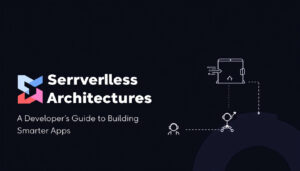New tools are making quantum chemistry simpler by automating complex molecular simulation tasks. Historically, these programs required expertise in theoretical chemistry and advanced computing, limiting their use to specialists.
A team at Emory University has tackled this issue, creating a chatbot to simplify the process.
The web-based platform, called AutoSolvateWeb, uses an open chatbot interface to help users set up molecular simulations and visualize molecular behavior in solutions. It’s designed for anyone, from seasoned researchers to undergraduate students, allowing them to conduct intricate quantum mechanical simulations through a simple chat system.
AutoSolvateWeb is free, cloud-based, and widely accessible, making it a valuable tool for researchers and educators alike.
How It Works
AutoSolvateWeb assists in creating virtual 3D models of molecules interacting in solutions. Users can simulate scenarios such as dissolving one chemical (the solute) into another (the solvent). These simulations are presented as 3D animations, offering a clear, atomic-level perspective of molecular interactions.
“It’s like looking through a microscope but at a molecular level,” says Fang Liu, Emory’s assistant professor of chemistry and the lead developer of AutoSolvateWeb.
The platform makes it easier to generate large datasets of molecular behavior, which can then be used to train machine learning models. These datasets have potential applications in renewable energy, healthcare, and other fields.
“Our goal is to accelerate scientific discoveries,” notes Fangning Ren, an Emory PhD student and co-author of the study published in the journal Chemical Science.
Simplifying Complex Simulations
Liu’s team focuses on computational chemistry, aiming to streamline simulations of molecular properties and reactions. Before AutoSolvateWeb, setting up these simulations required coding expertise, making the process time-intensive.
In 2022, the group launched the original AutoSolvate system, which cut down coding requirements from hundreds of lines to just a few. While this earlier version introduced an intuitive graphical interface, it primarily catered to experienced chemists.
AutoSolvateWeb takes this a step further by integrating a chatbot that operates using natural language instead of computer code. This allows even those with minimal technical skills to set up simulations effortlessly.
Expanding Access with Cloud Technology
Running primarily on cloud infrastructure, AutoSolvateWeb eliminates the need for expensive hardware. Users simply interact with the chatbot, which offers a step-by-step guide to set up simulations.
For example, users can input a molecule like caffeine and select a solvent, such as water. The system uses PubChem, a database maintained by the National Institutes of Health, to gather molecular data. It automates calculations, submits the request to a National Science Foundation supercomputer, and delivers results in a 3D animation format.
Unlike conversational AI tools like ChatGPT, AutoSolvateWeb’s chatbot is task-specific, focusing solely on guiding users through molecular simulations.
“Chemists can spend less time learning coding and more time solving complex problems,” says Liu. She adds that this tool empowers students to independently explore molecular dynamics.
Supporting Education
AutoSolvateWeb also has the potential to revolutionize chemistry education. Ren explains that simulations are becoming increasingly critical in scientific research, and students need hands-on experience to keep up.
Take solvatochromism as an example. This method examines how chemicals behave in liquids. In traditional lab experiments, students combine a solute like Riechart’s dye with various solvents, observing how the solution changes color. This change is linked to molecular interactions.
While basic concepts like solvent polarity are straightforward, exceptions often occur. For instance, two solvents with similar polarities may produce entirely different colors due to hydrogen bonding. To fully grasp these exceptions, students can use computer simulations to observe molecular structures in motion.
“Seeing the molecular interactions helps students go beyond memorizing concepts,” Liu explains. “They can start thinking critically and making discoveries on their own.”
Looking Ahead
The development team is working to expand AutoSolvateWeb’s capabilities, aiming to simulate more complex chemical systems and share results in an open-source format.
Their hope is that this initiative inspires other scientists to make advanced computational tools more accessible. Ren believes this could help connect artificial intelligence across multiple scientific fields, opening the door to innovative interdisciplinary research.
For more on the intersection of AI and science, visit The Spartane.









